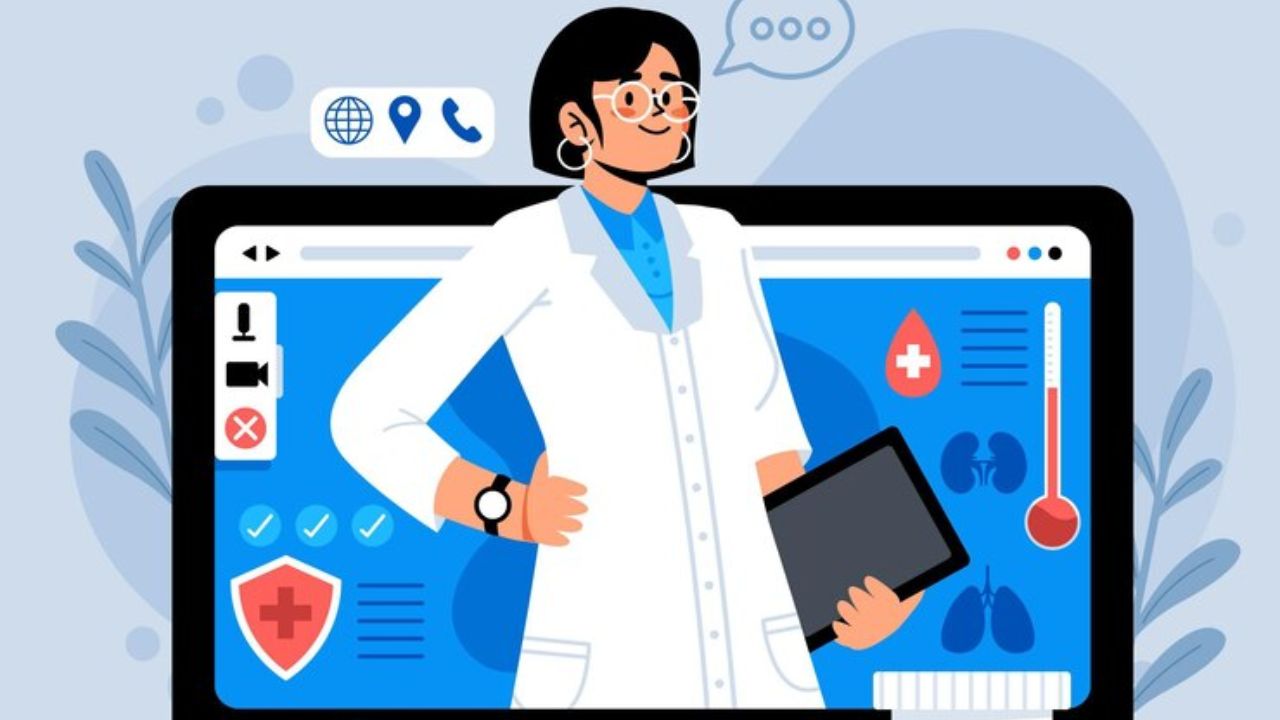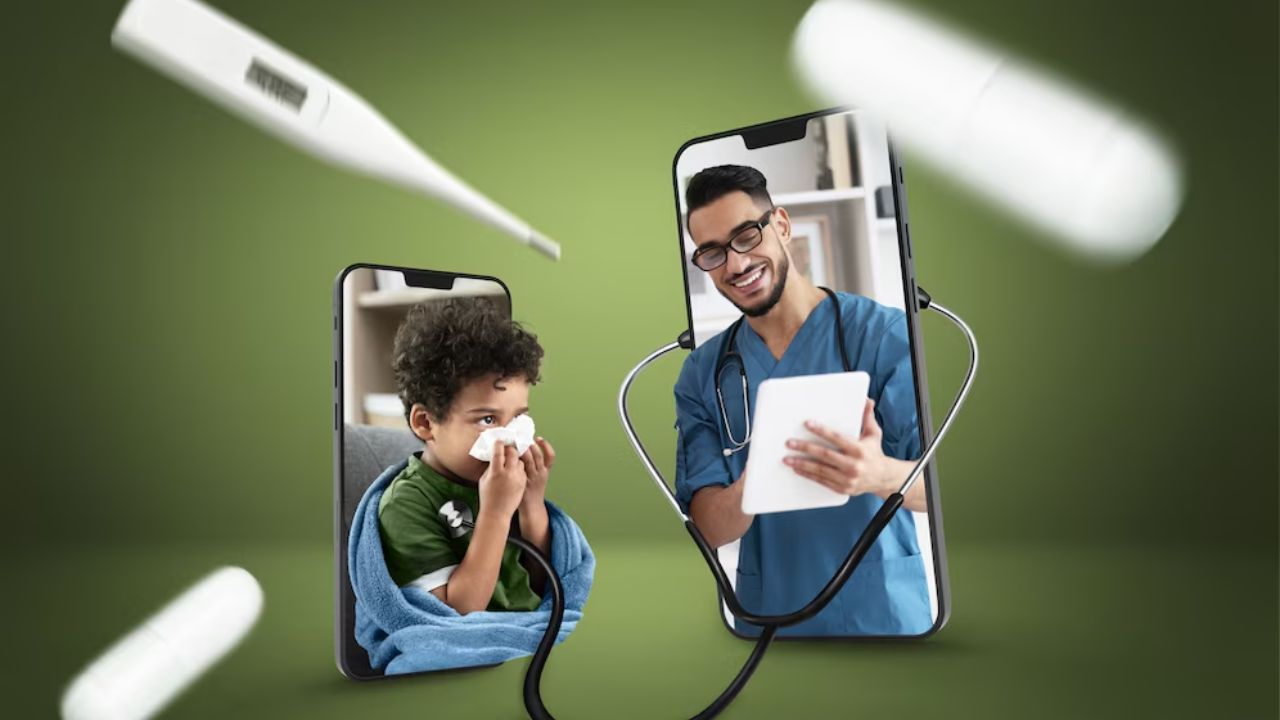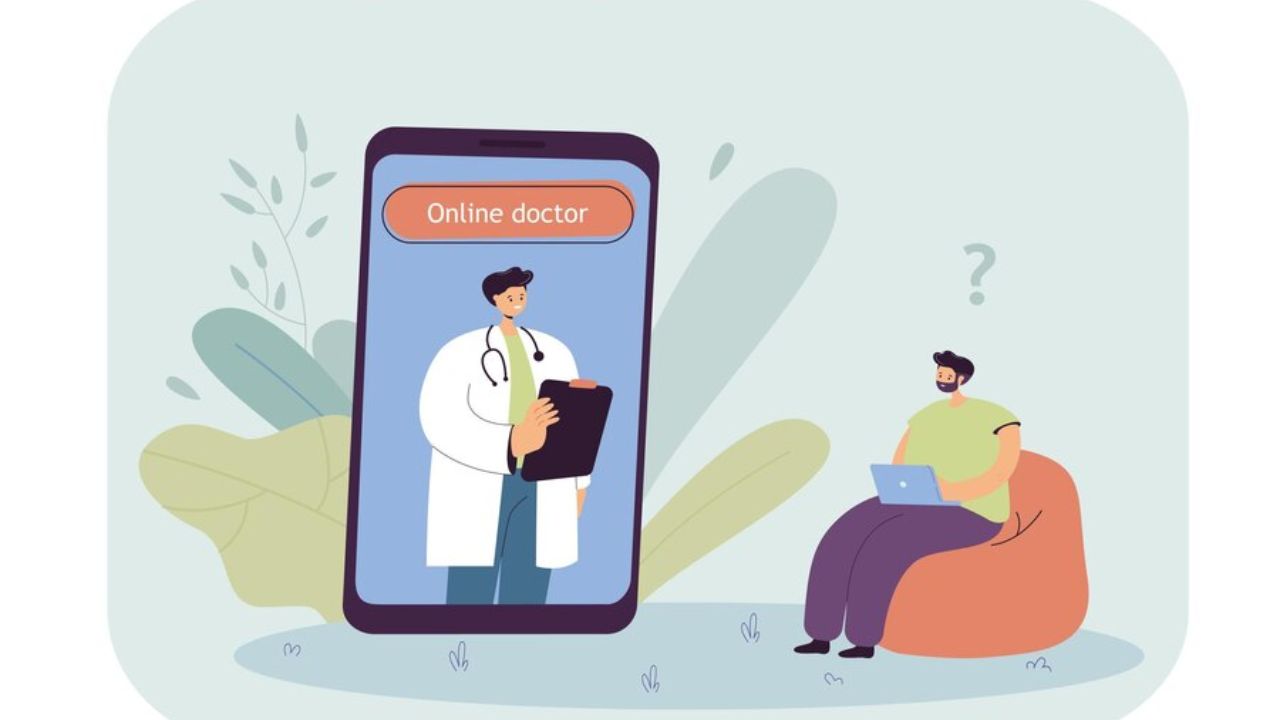In today’s competitive healthcare landscape, hospitals are constantly seeking innovative ways to attract and engage patients. With the increasing importance of digital marketing and the evolving preferences of consumers, traditional promotional methods may not always suffice. To stand out and effectively reach your target audience, it’s essential to embrace creativity and think outside the box. In this article, we’ll explore 10 creative hospital promotion ideas that can help you attract and engage patients while optimizing your SEO strategy.
What is Hospital Marketing?
Hospital marketing encompasses the strategies and initiatives undertaken by healthcare facilities to promote their services, build brand awareness, attract patients, and foster relationships with the community. Unlike traditional consumer goods or services, hospital marketing requires a unique approach due to the sensitive nature of healthcare and the importance of trust and credibility in the patient-provider relationship.

Key elements of hospital marketing include:
- Brand Identity: Establishing a strong brand identity that reflects the hospital’s values, mission, and unique selling points. This includes developing a cohesive visual identity, brand messaging, and positioning that resonates with the target audience.
- Digital Presence: Building a robust online presence through the hospital’s website, social media channels, and online directories. This involves optimizing the hospital’s website for search engines (SEO), creating engaging content, and actively engaging with followers on social media platforms.
- Patient Education: Providing valuable health information and resources to patients and the community through patient education materials, seminars, workshops, and online content. Educated patients are empowered to make informed decisions about their healthcare and are more likely to trust and choose the hospital for their needs.
- Physician Referral Programs: Developing relationships with referring physicians and healthcare providers to increase patient referrals to the hospital. This may involve networking, providing educational opportunities, and offering incentives for referrals.
- Community Engagement: Engaging with the local community through outreach events, health fairs, sponsorships, and partnerships with community organizations. Building strong ties with the community not only enhances brand visibility but also demonstrates the hospital’s commitment to supporting the health and well-being of its residents.
- Patient Experience: Ensuring a positive patient experience at every touchpoint, from scheduling appointments to receiving care and follow-up. This involves providing excellent customer service, addressing patient feedback and concerns, and continually striving to improve the quality of care and services offered.
- Reputation Management: Managing the hospital’s online reputation through proactive reputation management strategies. This includes monitoring online reviews, responding to feedback and complaints, and addressing any negative publicity in a timely and professional manner.
- Data Analytics: Utilizing data analytics and metrics to measure the effectiveness of marketing initiatives, track patient acquisition and retention, and identify areas for improvement. This data-driven approach allows hospitals to optimize their marketing strategies and allocate resources more effectively.
Overall, hospital marketing encompasses a range of strategies and tactics aimed at promoting the hospital’s services, building trust and credibility with patients, and ultimately, improving patient outcomes and satisfaction.
1. How Virtual Tours Attract and Engage New Patients
In the ever-evolving landscape of healthcare marketing, hospitals are continually seeking innovative ways to attract and engage new patients. One particularly effective tool gaining traction in recent years is the use of virtual tours. Far beyond mere gimmickry, virtual tours offer a dynamic and immersive experience that not only showcases hospital facilities but also fosters a sense of trust, familiarity, and connection with prospective patients. Let’s delve deeper into how virtual tours are reshaping patient engagement and acquisition in the healthcare industry.

Breaking Down Barriers to Access
For many prospective patients, visiting a hospital for the first time can be an intimidating and anxiety-inducing experience. Virtual tours provide a solution by allowing individuals to explore hospital facilities from the comfort of their own homes. By offering a virtual walkthrough of departments, patient rooms, waiting areas, and specialized treatment areas, hospitals break down geographical and psychological barriers, making healthcare more accessible and approachable.
Building Trust through Transparency
Transparency is key in building trust between healthcare providers and patients. Virtual tours offer an unprecedented level of transparency by providing an insider’s view of hospital facilities. Prospective patients can see the quality of equipment, the cleanliness of facilities, and the overall environment firsthand, instilling confidence in the hospital’s standards of care. This transparency fosters trust and helps alleviate fears or uncertainties that patients may have about seeking treatment.
Personalizing the Patient Experience
One of the most significant advantages of virtual tours is their ability to personalize the patient experience. Hospitals can tailor virtual tours to highlight specific services, amenities, or specialties that may be of interest to different patient demographics. Whether it’s showcasing a maternity ward for expectant parents or highlighting cutting-edge technology in a cancer treatment center, virtual tours allow hospitals to cater to the unique needs and preferences of diverse patient populations.
Enhancing Engagement and Education
Virtual tours are more than just passive experiences; they’re interactive and engaging journeys that educate and inform prospective patients. Hospitals can embed informative content within virtual tours, such as pop-up tooltips, videos, or audio narrations, to provide context, explanations, and insights into various aspects of healthcare services. This educational component not only enhances the virtual tour experience but also empowers patients to make more informed decisions about their healthcare.
Amplifying Online Visibility and SEO
In today’s digital age, an online presence is crucial for hospitals looking to attract new patients. Virtual tours play a vital role in amplifying online visibility and search engine optimization (SEO). By embedding virtual tours on the hospital’s website and sharing them across social media platforms, hospitals can increase engagement, drive traffic, and improve search rankings. Optimizing virtual tour content with relevant keywords and metadata further enhances discoverability and ensures that the hospital remains visible to potential patients searching for healthcare services online.
Nurturing Patient Relationships
Virtual tours are not just for attracting new patients; they also play a role in nurturing patient relationships and loyalty. Hospitals can offer virtual tours as part of their patient onboarding process, providing a familiarization experience for individuals scheduled for upcoming appointments or procedures. Additionally, virtual tours can serve as a valuable resource for existing patients, allowing them to revisit hospital facilities or explore new services or departments as their healthcare needs evolve.
2. How a Wellness Blog Captivates and Engages New Patients
In the digital age, where information is at our fingertips, health-conscious individuals are increasingly turning to online resources for guidance, support, and inspiration on their wellness journey. Enter the health and wellness blog – a dynamic platform that not only educates and informs but also captivates and engages new patients. Let’s explore how a well-curated health and wellness blog serves as a beacon of empowerment, attracting and nurturing a community of individuals seeking to optimize their health and well-being.

Education Empowers
At the heart of every successful health and wellness blog lies a commitment to education. By delivering insightful and evidence-based content, these blogs empower readers with the knowledge and tools they need to make informed decisions about their health. From debunking common myths to exploring the latest research findings, each blog post serves as a beacon of enlightenment, guiding readers on their quest for optimal health.
Cultivating Trust through Expertise
One of the most significant advantages of a health and wellness blog is its ability to cultivate trust through expertise. By featuring content authored by qualified healthcare professionals, these blogs establish themselves as trusted sources of information and guidance. Readers are more likely to place their trust in a blog that offers credible insights backed by scientific evidence, paving the way for a meaningful and enduring patient-provider relationship.
Fostering Engagement and Interaction
A health and wellness blog is more than just a repository of articles; it’s a vibrant community where like-minded individuals come together to share ideas, experiences, and support. Through comments, social media shares, and online forums, readers engage in meaningful discussions, ask questions, and offer encouragement to one another. This sense of community fosters a deeper connection with the blog and its mission, encouraging readers to return time and time again.
Personalizing the Patient Experience
In today’s consumer-driven healthcare landscape, patients expect personalized experiences tailored to their unique needs and preferences. A health and wellness blog excels in this regard by offering content that resonates with readers on a personal level. Whether it’s addressing specific health concerns, sharing relatable stories, or offering practical tips for healthy living, each blog post speaks directly to the reader, making them feel seen, heard, and understood.
Amplifying Visibility and Reach
A well-executed health and wellness blog has the power to amplify a hospital’s visibility and reach far beyond its physical walls. By optimizing content for search engines, sharing across social media platforms, and collaborating with influencers and partners, hospitals can attract a broader audience of potential patients. As readers discover and engage with the blog’s content, they become ambassadors for the hospital, spreading the word and driving further growth.
Nurturing Long-Term Relationships
Beyond attracting new patients, a health and wellness blog plays a vital role in nurturing long-term relationships with existing patients. By providing ongoing support, encouragement, and resources, hospitals can strengthen their connection with patients and foster loyalty over time. Whether it’s offering follow-up articles, hosting live webinars, or providing access to exclusive content, the blog serves as a trusted companion on each patient’s wellness journey.
3. How Video Testimonials Inspire and Connect with New Patients
In the vast landscape of healthcare options, patients often seek reassurance and validation before choosing a provider. While traditional advertising methods can convey information, nothing quite matches the impact of hearing directly from those who have experienced care firsthand. Enter video testimonials – powerful narratives that not only attract but also deeply engage new patients. Let’s explore how these authentic voices inspire trust, foster connection, and drive patient acquisition in the healthcare realm.

The Power of Authenticity
In a world inundated with marketing messages, authenticity reigns supreme. Video testimonials offer a genuine and unfiltered glimpse into the patient experience, allowing viewers to connect on a human level. When individuals share their stories, emotions, and successes on camera, it resonates with prospective patients in a profound way, instilling trust and credibility in the provider.
Emotional Connection Drives Engagement
Emotions play a significant role in decision-making, particularly when it comes to matters of health and well-being. Video testimonials have the unique ability to evoke emotions, whether it’s empathy, hope, or inspiration. When viewers witness the raw emotions of gratitude, relief, or joy expressed by patients, it creates a powerful connection that transcends mere words and images, driving engagement and fostering a sense of shared experience.
Varied Perspectives Tell a Richer Story
Every patient journey is unique, and video testimonials offer a platform for diverse voices to be heard. Whether it’s a triumphant recovery from illness, a transformative weight loss journey, or a heartfelt expression of gratitude for exceptional care, each testimonial adds depth and richness to the provider’s narrative. By featuring testimonials from patients of different backgrounds, ages, and medical conditions, providers can appeal to a broader audience and showcase their inclusive approach to care.
Demonstrating Expertise and Results
Beyond evoking emotions, video testimonials serve as tangible evidence of a provider’s expertise and the effectiveness of their treatments or services. When patients share their success stories and outcomes on camera, it provides compelling proof of the provider’s ability to deliver results. Whether it’s a cosmetic procedure, a chronic disease management program, or a life-saving intervention, video testimonials offer real-life examples of the positive impact of healthcare services.
Accessibility and Shareability
In today’s digital age, video content is king, and video testimonials are no exception. With the widespread availability of smartphones and social media platforms, video content is easily accessible to a vast audience. Providers can leverage video testimonials across their website, social media channels, email newsletters, and digital marketing campaigns to reach and engage prospective patients wherever they may be. The shareability of video content also extends its reach, as satisfied patients are likely to share their testimonials with their own networks, amplifying the provider’s message and visibility.
Building Trust for Long-Term Relationships
Ultimately, the goal of video testimonials is not just to attract new patients but to build trust and foster long-term relationships. By showcasing real stories of compassion, expertise, and positive outcomes, providers lay the foundation for enduring connections with patients. Video testimonials serve as a testament to the provider’s commitment to patient-centered care, instilling confidence and loyalty in both current and prospective patients alike.
4. How Community Events Drive Patient Engagement
In today’s fast-paced healthcare landscape, building meaningful connections with patients extends far beyond the walls of a clinic or hospital. Community events serve as invaluable platforms for providers to engage with their local neighborhoods, foster relationships, and attract new patients. Let’s delve into how these gatherings serve as catalysts for connection, empowerment, and ultimately, patient acquisition.

Embracing Community Connection
At the heart of community events lies the spirit of connection – bringing people together around shared interests, concerns, or goals. For healthcare providers, community events offer an opportunity to forge deeper connections with individuals beyond the clinical setting. Whether it’s a health fair, fitness class, or educational seminar, these events create a sense of belonging and solidarity within the community.
Education and Empowerment
Community events are not just about socializing; they’re also powerful platforms for education and empowerment. By offering workshops, screenings, and informative sessions on health-related topics, providers empower attendees to take control of their well-being. Whether it’s learning about preventive care, nutrition, or mental health resources, attendees leave these events feeling informed, inspired, and equipped to make positive lifestyle changes.
Humanizing Healthcare
In an era of digital communication and virtual interactions, community events offer a refreshing opportunity to humanize healthcare. Providers have the chance to meet patients face-to-face, listen to their concerns, and offer personalized guidance and support. By showing genuine care and compassion, providers build trust and rapport with attendees, transforming them from passive observers to active participants in their healthcare journey.
Building Brand Visibility and Trust
Community events serve as powerful brand-building opportunities for healthcare providers. By sponsoring or hosting events, providers increase their visibility within the community and position themselves as trusted sources of care and expertise. When attendees see providers actively engaged in community initiatives, it reinforces their trust and confidence in the provider’s commitment to their well-being, making them more likely to choose them for their healthcare needs.
Nurturing Long-Term Relationships
Beyond attracting new patients, community events play a vital role in nurturing long-term relationships with existing patients. By regularly engaging with patients outside of the clinical setting, providers deepen their connection and loyalty. Community events serve as touchpoints for ongoing communication, support, and follow-up care, ensuring that patients feel valued and supported throughout their healthcare journey.
Word-of-Mouth Referrals
Perhaps one of the most powerful outcomes of community events is the ripple effect of word-of-mouth referrals. Satisfied attendees are likely to share their positive experiences with friends, family, and neighbors, effectively serving as ambassadors for the provider. These personal recommendations carry significant weight and can drive new patient referrals, further expanding the provider’s reach and impact within the community.
5. How Patient Education Workshops Drive Patient Engagement
In the realm of modern healthcare, patient education is not merely an afterthought but a cornerstone of proactive and preventive care. Patient education workshops offer a unique avenue for hospitals to empower individuals with knowledge, skills, and resources to take control of their health. Let’s explore how these workshops serve as catalysts for engagement, empowerment, and ultimately, patient acquisition for hospitals.

Knowledge is Power
Patient education workshops embody the age-old adage that knowledge is power. By offering workshops on a range of health-related topics, hospitals equip individuals with the information they need to make informed decisions about their health and well-being. Whether it’s understanding chronic conditions, managing medications, or adopting healthy lifestyle habits, these workshops empower attendees to take proactive steps toward better health outcomes.
Fostering Engagement and Interaction
Beyond imparting knowledge, patient education workshops foster meaningful engagement and interaction among participants. Attendees have the opportunity to ask questions, share experiences, and learn from one another in a supportive and collaborative environment. This sense of camaraderie and shared learning enhances the workshop experience and encourages attendees to actively participate in their healthcare journey.
Building Trust and Credibility
Patient education workshops serve as powerful trust-building tools for hospitals. By providing evidence-based information and expert guidance, hospitals demonstrate their commitment to transparency, quality care, and patient empowerment. When attendees see hospitals investing in their education and well-being, it fosters trust and confidence in the organization, making them more likely to choose it for their healthcare needs.
Addressing Community Needs
One of the key benefits of patient education workshops is their ability to address specific health concerns and needs within the community. Hospitals can tailor workshop topics to reflect prevalent health issues, cultural considerations, and demographic trends, ensuring relevance and resonance with attendees. By addressing community needs directly, hospitals demonstrate their responsiveness and dedication to serving the diverse needs of their population.
Enhancing Patient-Provider Relationships
Patient education workshops offer a unique opportunity for attendees to interact directly with healthcare providers outside of the clinical setting. By engaging in dialogue, asking questions, and seeking guidance from providers, attendees develop stronger connections and rapport with their healthcare team. These enhanced patient-provider relationships foster trust, communication, and collaboration, ultimately leading to better health outcomes.
Amplifying Brand Visibility and Reputation
By hosting patient education workshops, hospitals increase their visibility and reputation within the community as trusted sources of health information and expertise. Attendees associate the hospital with quality care, expertise, and a commitment to patient education and empowerment. As a result, hospitals become top-of-mind choices for individuals seeking healthcare services, driving patient acquisition and loyalty over time.
Cultivating a Culture of Wellness
Patient education workshops play a vital role in cultivating a culture of wellness within the community. By promoting preventive care, healthy lifestyle habits, and early intervention, hospitals empower individuals to prioritize their health and well-being proactively. This proactive approach not only improves individual health outcomes but also reduces healthcare costs and burdens on the healthcare system as a whole.
6. A Fun Pathway to Healthcare Engagement
In the dynamic world of healthcare marketing, hospitals are continually seeking innovative ways to connect with their audience and foster meaningful engagement. Social media contests have emerged as a vibrant and interactive strategy to attract, engage, and ultimately, convert new patients. Let’s explore how these contests serve as catalysts for community building, brand awareness, and patient acquisition for hospitals.

Building Buzz and Excitement
Social media contests inject a sense of excitement and anticipation into the digital landscape. By offering enticing prizes, such as gift cards, wellness packages, or complimentary health screenings, hospitals capture the attention and interest of their audience. The allure of winning prizes motivates individuals to participate in the contest, generating buzz and momentum around the hospital’s brand and services.
Fostering Community Engagement
At the heart of social media contests lies the spirit of community engagement. Contests encourage interaction, dialogue, and participation among followers, creating a sense of camaraderie and connection. Whether it’s sharing contest posts, submitting entries, or voting for favorites, participants become active contributors to the hospital’s online community, fostering a sense of belonging and affinity with the brand.
Showcasing Hospital Services and Expertise
Social media contests offer hospitals a unique opportunity to showcase their services, expertise, and commitment to patient care. Contests can be themed around specific healthcare topics, services, or specialties, allowing hospitals to highlight their areas of excellence and differentiation. By educating and informing participants through contest content, hospitals position themselves as trusted sources of health information and support.
Generating User-Generated Content
One of the most significant benefits of social media contests is their ability to generate user-generated content (UGC). Participants often create and share original content, such as photos, videos, or testimonials, as part of their contest entries. This UGC serves as authentic and relatable content that resonates with other followers, amplifying the reach and impact of the hospital’s message and brand.
Amplifying Brand Awareness
Social media contests are potent tools for amplifying brand awareness and visibility within the community. As participants engage with contest posts, share content, and interact with the hospital’s social media profiles, the hospital’s brand presence expands organically across social networks. This increased visibility not only attracts new followers but also introduces the hospital to individuals who may not have been previously aware of its services.
Driving Traffic and Lead Generation
Beyond brand awareness, social media contests can drive tangible results in terms of traffic and lead generation for hospitals. Contests often require participants to visit the hospital’s website, fill out forms, or sign up for newsletters, thereby generating qualified leads for future engagement and conversion. Additionally, contest participants may explore other areas of the hospital’s online presence, such as services pages or patient testimonials, further enhancing their understanding of the hospital’s offerings.
Cultivating Long-Term Relationships
Social media contests serve as the starting point for long-term relationships between hospitals and participants. By capturing contact information and engaging with participants throughout the contest process, hospitals lay the foundation for ongoing communication and relationship-building. Follow-up emails, personalized messages, and targeted content keep participants engaged and connected with the hospital’s brand, ultimately leading to increased patient loyalty and retention.
7. How Online Doctor Q&A Sessions Drive Patient Engagement
In the era of digital connectivity, healthcare providers are increasingly leveraging online platforms to engage with patients beyond the confines of the clinic. Online doctor Q&A sessions have emerged as a dynamic and interactive strategy to attract, engage, and empower individuals seeking health-related information and guidance. Let’s explore how these sessions serve as gateways to patient engagement, education, and ultimately, patient acquisition for hospitals.

Accessible Expertise at Your Fingertips
Online doctor Q&A sessions offer individuals unparalleled access to expert medical advice and insights from the comfort of their own homes. Whether it’s seeking clarification on symptoms, understanding treatment options, or receiving preventive care recommendations, participants can pose their questions directly to healthcare professionals in real-time. This accessibility eliminates barriers to seeking medical advice and empowers individuals to take proactive steps toward better health outcomes.
Fostering Trust and Credibility
By hosting online doctor Q&A sessions, hospitals demonstrate their commitment to transparency, patient education, and accessibility. Participants gain firsthand experience of the hospital’s expertise, professionalism, and dedication to patient care, fostering trust and credibility in the organization. When individuals see healthcare professionals engaging directly with the community and providing valuable guidance, it reinforces their confidence in the hospital as a trusted source of medical expertise.
Engaging and Informative Content
Online doctor Q&A sessions offer engaging and informative content that resonates with individuals seeking health-related information. Participants have the opportunity to learn from real-life case studies, practical advice, and evidence-based recommendations provided by healthcare professionals. These sessions go beyond static information by offering dynamic interaction and personalized responses tailored to participants’ specific concerns and inquiries.
Community Building and Peer Support
Beyond seeking medical advice, online doctor Q&A sessions foster a sense of community and peer support among participants. Individuals facing similar health challenges or concerns come together to share experiences, ask questions, and offer encouragement to one another. This sense of solidarity and understanding creates a supportive environment where participants feel empowered and validated in their health journey.
Amplifying Online Visibility and Reach
Online doctor Q&A sessions serve as powerful tools for amplifying a hospital’s online visibility and reach. By promoting sessions across social media platforms, email newsletters, and digital marketing channels, hospitals attract a broader audience of potential patients. As participants engage with session content, share insights, and interact with healthcare professionals, the hospital’s brand presence expands organically, reaching individuals who may not have been previously aware of its services.
Driving Patient Acquisition and Retention
Ultimately, online doctor Q&A sessions drive patient acquisition and retention by fostering meaningful connections and relationships with participants. Individuals who engage with session content and receive valuable guidance are more likely to choose the hospital for their healthcare needs in the future. Additionally, ongoing communication and follow-up initiatives keep participants engaged and connected with the hospital’s brand, leading to increased patient loyalty and retention over time.
Conclusion
Hospital marketing is a multifaceted endeavor that requires a strategic approach to effectively reach and engage patients in today’s digital age. By embracing a patient-centric mindset, hospitals can develop marketing strategies that prioritize trust, transparency, and empathy, ultimately strengthening the patient-provider relationship and improving healthcare outcomes.
Through a combination of digital marketing, community engagement, patient education, and reputation management, hospitals can effectively promote their services, build brand awareness, and attract new patients. By leveraging data analytics and measuring the impact of marketing efforts, hospitals can refine their strategies over time to better meet the evolving needs of patients and the community.
Ultimately, successful hospital marketing is not just about attracting patients but about fostering meaningful connections, empowering individuals to take control of their health, and delivering exceptional care experiences. By prioritizing patient engagement and satisfaction, hospitals can differentiate themselves in a competitive healthcare landscape and ultimately improve the health and well-being of the communities they serve.
FAQs on Hospital Marketing:
1. Q: What are some effective hospital promotion ideas to attract new patients?
A: There are several effective hospital promotion ideas to attract new patients, including hosting health fairs or wellness workshops in the community, leveraging social media platforms to share valuable health information and engage with potential patients, offering free health screenings or consultations, partnering with local businesses or organizations for cross-promotional opportunities, and implementing targeted advertising campaigns to reach specific patient demographics.
2. Q: How can hospitals leverage digital marketing strategies to attract and engage patients?
A: Hospitals can leverage digital marketing strategies to attract and engage patients by optimizing their website for search engines (SEO), creating informative and engaging content such as blogs, videos, and infographics, actively engaging with patients on social media platforms, utilizing targeted online advertising campaigns, implementing email marketing campaigns to nurture patient relationships, and leveraging patient reviews and testimonials to build trust and credibility.
3. Q: What role does patient education play in hospital marketing?
A: Patient education plays a crucial role in hospital marketing by empowering individuals to make informed decisions about their health and well-being. Hospitals can provide valuable health information and resources through patient education materials, workshops, seminars, and online content, helping patients understand their conditions, treatment options, and preventive care measures. By educating patients, hospitals not only build trust and credibility but also foster long-term patient engagement and loyalty.
4. Q: How can hospitals effectively engage with the local community to promote their services?
A: Hospitals can effectively engage with the local community to promote their services by participating in community events such as health fairs, sponsoring local sports teams or community organizations, hosting educational seminars or workshops, offering free health screenings or vaccination clinics, collaborating with local businesses for cross-promotional opportunities, and actively participating in community outreach initiatives.
5. Q: What strategies can hospitals use to improve patient satisfaction and retention?
A: Hospitals can use several strategies to improve patient satisfaction and retention, including providing excellent customer service and patient-centered care, implementing feedback mechanisms to listen to patient concerns and suggestions, ensuring clear communication between patients and healthcare providers, optimizing the patient experience from scheduling to follow-up care, offering amenities and support services that enhance the patient’s comfort and well-being, and actively engaging with patients through personalized communication and follow-up initiatives.


